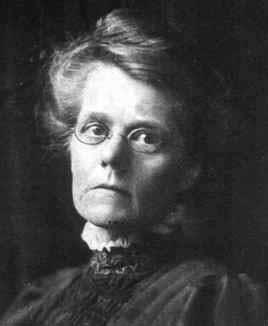
Alicia Boole Stott
 المؤلف:
H S M Coxeter
المؤلف:
H S M Coxeter
 المصدر:
Regular polytopes
المصدر:
Regular polytopes
 الجزء والصفحة:
...
الجزء والصفحة:
...
 17-3-2017
17-3-2017
 611
611
Born: 8 June 1860 in Cork, Ireland
Died: 17 December 1940 in England

Alicia Boole was the third daughter of George Boole. George Boole died when Alicia was only four years old and she was was brought up partly in England by her grandmother, partly in Cork by her great-uncle. When she was twelve years old she went to London where she joined her mother and sisters.
With no formal education she suprised everyone when, at the age of eighteen, she was introduced to a set of little wooden cubes by her brother-in-law Charles Howard Hinton. Alicia Boole experimented with the cubes and soon developed an amazing feel for four dimensional geometry. She introduced the word 'polytope' to describe a four dimensional convex solid.
MacHale, in [3], writes:-
She found that there were exactly six regular polytopes on four dimensions and that they are bounded by 5, 16 or 600 tetrahedra, 8 cubes, 24 octahedra or 120 dodecahedra. She then produced three-dimensional central cross-sections of all the six regular polytopes by purely Euclidean constructions and synthetic methods for the simple reason that she had never learned any analytic geometry. She made beautiful cardboard models of all these sections....
After taking up secretarial work near Liverpool in 1889 she met and married Walter Stott in 1890. Stott learned of Schoute's work on central sections of the regular polytopes in 1895 and Alicia Stott sent him photographs of her cardboard models. Schoute came to England and worked with Alicia Stott, persuading her to publish her results which she did in two papers published in Amsterdam in 1900 and 1910.
The University of Groningen honoured her by inviting her to attend the tercentenary celebrations of the university and awarding her an honorary doctorate in 1914.
In 1930 she was introduced to Coxeter and they worked together on various problems. Alicia Stott made two further important discoveries relating to constructions for polyhedra related to the golden section. Coxeter described his time doing joint work with her saying:-
The strength and simplicity of her character combined with the diversity of her interests to make her an inspiring friend.
Books:
- H S M Coxeter, Regular polytopes (London, 1948).
Articles:
- L S Grinstein and P J Campbell (eds.), Women of Mathematics (Westport, Conn., 1987), 220-224.
- D McHale, George Boole : his life and work (Dublin, 1985), 260-263.
 الاكثر قراءة في 1860to1864
الاكثر قراءة في 1860to1864
 اخر الاخبار
اخر الاخبار
اخبار العتبة العباسية المقدسة


